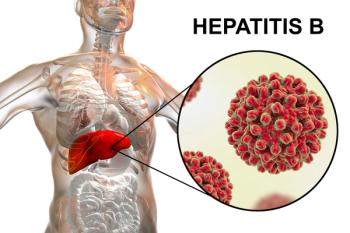
To treat or not to treat: Managing chronic insomnia
To sleep: perchance to dream: ay, there's the rub," wrote Shakespeare in Hamlet several centuries ago. And that still appears to be true: According to recent estimates, about 20% of the American population is afflicted with intermittent or chronic sleep problems. But how much of a health problem is this?
To sleep: perchance to dream: ay, there's the rub," wrote Shakespeare in Hamlet several centuries ago. And that still appears to be true: According to recent estimates, about 20% of the American population is afflicted with intermittent or chronic sleep problems. But how much of a health problem is this?
To better understand the problem of insomnia, as well as to evaluate solutions and set directions for future research, the National Institute of Mental Health and the Office of Medical Applications of Research of the National Institutes of Health recently sponsored a State-of-the-Science Conference on the Manifestations and Management of Chronic Insomnia in Adults in Bethesda, Md.
The outcome of this conference is a cutting edge statement issued by an independent panel summarizing the current knowledge of insomnia as well as its limitations. Its purpose is to advance both the state of science of insomnia and the practice of medicine. Based on the state of existing information about chronic insomnia, the panel pinpointed several inadequacies in current knowledge.
Helen Baghdoyan, Ph.D., professor, department of anesthesiology, University of Michigan, Ann Arbor, was a panel member. She noted that there are currently eight prescription drugs in the class of benzodiazepine-receptor agonists approved for the treatment of insomnia, but only one is indicated for treatment for more than 35 days-despite the fact that most studies define chronic insomnia as a condition lasting from 30 days to six months.
Baghdoyan noted that only with the recent approval of eszopiclone (Lunesta, Sepracor) did the FDA "not limit its indicated use. Studies have shown it to be effective in a double-blind, placebo-controlled trial for six months. Then that same study went a second six months in open-label, and it was still effective."
Another finding of the panel was that antidepressants are not approved for the treatment of insomnia, but they are often used off-label. Recent surveys show trazodone is the most commonly prescribed medication for insomnia. Trazodone does cause sedation as a side effect, but some data suggest it may not be sedating beyond the first two weeks.
Baghdoyan also commented that the panel found deficiencies in information obtained from sleep studies. "What hasn't been studied really is how insomnia affects performance and does treatment of insomnia improve performance the next day? And then there are the quality-of-life issues. There's a lot of literature about how sleep deprivation negatively affects performance, but insomnia is not the same as sleep deprivation."
Examining the evidence also yielded support for nonpharmacological therapy. Baghdoyan stated, "One of the other big things to come out of this is there's a relatively newly applied treatment for insomnia, cognitive behavioral therapy. Cognitive behavioral therapy has been found to be at least as effective, if not more effective, than some pharmacological treatments."
To better the management of insomnia, the panel made several recommendations. Baghdoyan explained, "One thing we recommended is that NIH and the pharmaceutical companies need to team up to study these drugs. The burden should be on the pharmaceutical companies to compare their pharmacological treatments to nonpharmacological treatments and then to do head-to-head trials."
The panel also documented a need for studies using validated instruments, for longitudinal observational studies to identify factors affecting the incidence of and remission from insomnia, as well as whether insomnia has a genetic etiology, and factors that relate to the development of insomnia, such as major chronic diseases and polypharmacy.
Although the panel's statement represents a comprehensive assessment of the current treatment of insomnia and makes recommendations for improvement, it does not directly encourage action, either by the pharmaceutical manufacturers or the FDA. Sources at the FDA noted that the statement will be considered in relation to the development of hypnotics, but offered no further comments about what effects it might have.
Newsletter
Pharmacy practice is always changing. Stay ahead of the curve with the Drug Topics newsletter and get the latest drug information, industry trends, and patient care tips.











































































































































































































